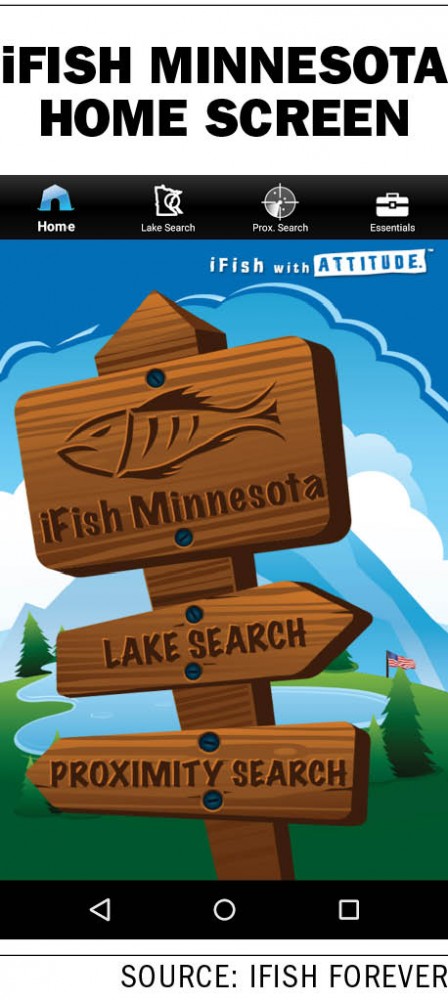Fishing enthusiasts now have a way to contribute to fisheries research in Minnesota and locate nearby lakes at the same time.
iFish Forever, an add-on to a fishing app released earlier this month, allows anglers to anonymously share their catch’s data in order to support state research and fisheries management. University of Minnesota and state researchers say the app will make gathering data they use easier and cheaper.
By tapping a button on the app, anglers can provide researchers with information about their fish, including species, length and whether they kept it or released it. In return, the app allows anglers to find nearby lakes and discover which species of fish are in them.
Fisheries researchers have traditionally used creel surveys to collect the data they need, but these supply only limited data. The surveys require a clerk to ask fishers a set of questions, which can be expensive and labor-intensive.
“[The app] is like a creel survey, but it is putting that creel survey in their pocket,” said Paul Venturelli, a fisheries, wildlife and conservation biology assistant professor. He said he hopes to use the data the app collects in future studies.
Traditional methods of gathering data are on the decline because of the cost of creel surveys, said Melissa Treml, fisheries research manager for the Minnesota Department of Natural Resources.
But with the app, anglers can contribute to the sustainability of fisheries management while also tracking their success and chatting on forums with other anglers.
“It’s a free app, it’s fun to use and it also has the capacity for anonymous data-sharing that’s important to management research,” Venturelli said.
The DNR provided $33,000 for the app’s development.
“We’ve been exploring alternative ways to collect similar data for years, and this is one of the most promising new tools that we have come across,” Treml said.
Randy Chamzuk, the developer of the iFish series of apps that complement iFish Forever, said he wanted to make the app simple to use and appealing to
anglers.
Chamzuk originally designed the app for Alberta, Canada, but expanded the app to work for other states and provinces. The app has versions for 48 states and four Canadian provinces.
“Minnesota is a lot like Alberta,” he said. “The anglers are angling with a lot of heart.”
DNR and University officials hope the app will garner around 20,000 to 30,000 downloads, Venturelli said.
“This app has the potential to collect a lot of the information that we need at very little expense,” Treml said.








